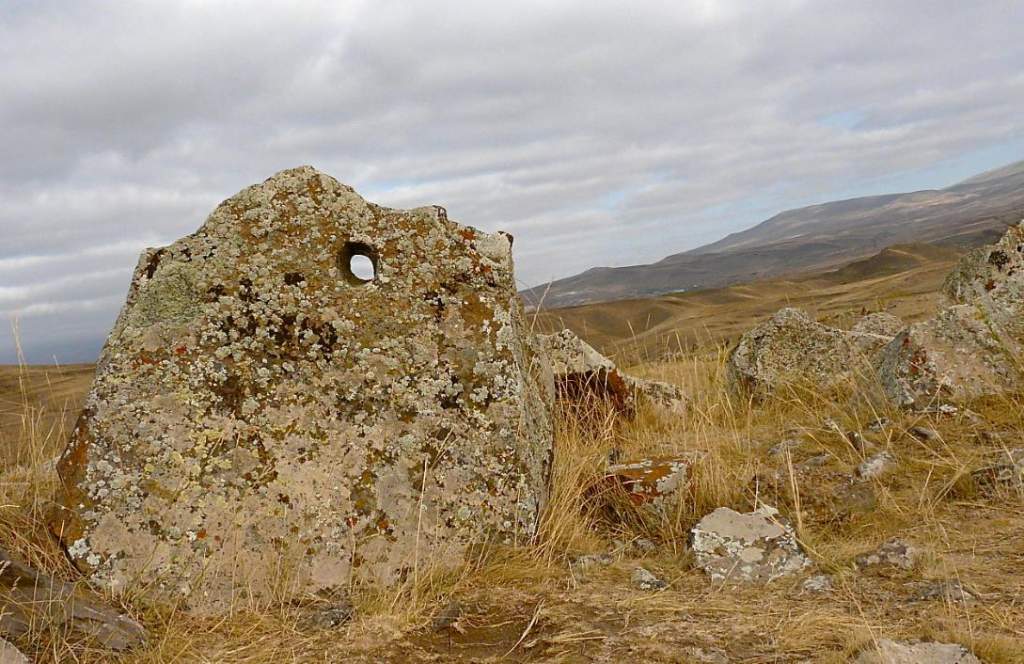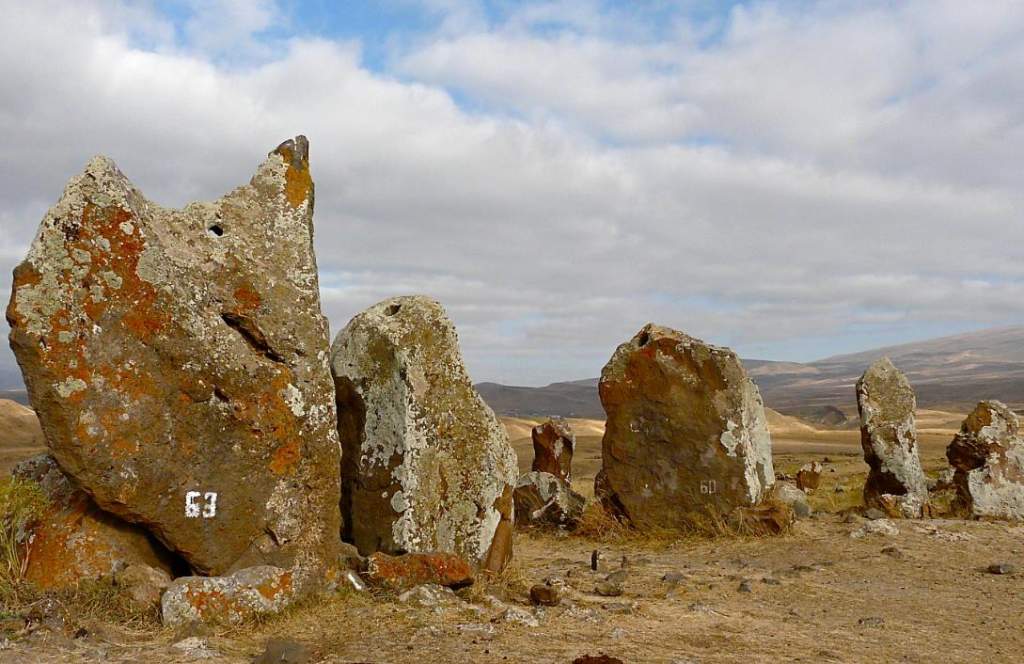The remarkable landmark known as Carahunge (speaking stones) or “stone voice” in Armenian is situated near the town of Sisian in the Syunik province, Armenia. Carahunge (also spelled Karahunj and Qarahunj), also known as Zorats Karer, Dik-Dik Karer, Tsits Karer, and Karenish. Visitors from other countries often refer to it as the “Armenian Stonehenge.” The location is full of standing stones (menhirs), burial cists, and stone settings.
It is made up of an intricate arrangement of massive standing stones, some of which are up to three meters tall and several tons in weight. The placement of these stones is round, giving the impression of alleyways and concentric rings. These stones are made of basalt (andesite), which has weathered over time and is coated with multicolored lichen and moss. The stones weigh up to 10 tons and range in height from 0.5 to 3 meters above the ground.
Carahunge is significant for its age and precision of construction, going back to the Neolithic era, circa 5500–4500 BC, making it roughly 2,000 years older than England’s Stonehenge. Carahunge predates the creation of the wheel and the birth of writing, contributing to its mystery and archaeological significance.
One of the most fascinating characteristics of Carahunge is its possible astrological significance. Some scholars think the stone arrangement operated as an ancient observatory, charting celestial occurrences including solstices, equinoxes, and lunar cycles. The alignment of specific stones with key astronomical events lends credence to this theory, implying that Carahunge was a hub for prehistoric sky-watching and perhaps even a calendar.
There are now 223 stones that have been recognized. In addition, there are a large number of fragments and unnumbered stones. There are about 80 stones with a circular hole in them. Russian and Armenian archaeoastronomers have expressed interest in them, speculating that the standing stones may have been utilized for astronomical observation. Fourteen of the stones were connected to the lunar extremes, and seventeen were connected to observations of the dawn or sunset on the solstices and equinoxes.
Nevertheless, not all researchers agree with the astronomical explanation. Some suggest that Carahunge had religious or ceremonial reasons, such as a sacred location for ceremonies and gatherings. The specific role of the place is still debated, however, Carahunge has most certainly performed many functions over the years. Despite its historical importance, Carahunge has received little attention when compared to other historical sites around the world.
As explained, archaeological research and exploration are required to unlock the secrets surrounding this fascinating site and shed light on the lives and faiths of its ancient architects. There is a modest museum devoted to local discoveries in the neighboring city of Sisian. These include the over 200 shaft tombs at the Bronze Age burial site, as well as Paleolithic petroglyphs discovered atop nearby mountains.
Also Read: The White Desert of Egypt










